One day in late 2022, Sok was in the middle of harvesting the rice he would rely on to feed his family for the coming year when a team of rangers led by a conservation NGO descended on his farmland on the outskirts of Chumnoab village in Koh Kong province.
Knowing that they would accuse him of illegally farming on protected land and possibly arrest him, Sok ran away, but the rangers burned all his sacks of rice and his family lost half their annual supply as a result. They had been farming on that land since the 1990s.
“I’m still scared. And I did not go to the farm again,” Sok told RFA. “I have only that place to farm but after what had happened that day, I do not dare to do it.”
An ethnic minority Chong farmer whose name has been changed for security reasons, Sok is one of hundreds of indigenous people living in eleven communities near or inside the Southern Cardamom REDD+ Project, run jointly by Cambodia’s Environment Ministry and New York-based nonprofit conservation organization Wildlife Alliance.
The project has protected nearly half a million hectares of forest across southwestern Cambodia, generating at least $18 million in carbon credits purchased by major companies looking to offset their emissions such as Delta Airlines, German pharmaceutical giant Bayer and consulting firm McKinsey.
Some Chong leaders say, however, that the flagship conservation project has prevented them from accessing their traditional lands and harmed their livelihoods, and that they have lacked autonomy and input on how the resources are used.
Tasked with protecting the area from deforestation for the sake of selling carbon credits,Wildlife Alliance rangers carry out patrols to go after poachers and loggers.
But the heavy-handed tactics have impacted ordinary villagers as well, resulting in forced evictions, arbitrary arrests and crop and property destruction, according to a newly released report from New York-based NGO Human Rights Watch (HRW).
In all, some eight Chong villages comprising hundreds of residents were unknowingly incorporated into a national park — drastically reducing their ability to survive off of their indigenous lands. After launching nine years ago without their prior consent, the conservation project still lacks a benefit sharing agreement to outline how revenue generated from these communities’ forests is distributed.
In a public letter shared in January, Wildlife Alliance founder and CEO Suwanna Gauntlett said her NGO had “nothing to hide” and that HRW had not taken a “comprehensive view of the project’s full impacts.”
“HRW presents a fundamentally misleading and distorted picture of the project,” Gauntlett told RFA in an emailed statement.
Cambodia’s Environment Ministry did not respond to requests for comment.
Residents maintain they have been restricted from engaging in their traditional farming practices and limited in their ability to harvest resin, farm rice and cut trees for everyday use such as building fences or homes.
“It scares us, we want to farm, we want to plant, we want to grow crops for the family’s livelihood, but we cannot do it,” a Chong community representative told RFA. “We’re stuck living in fear.”
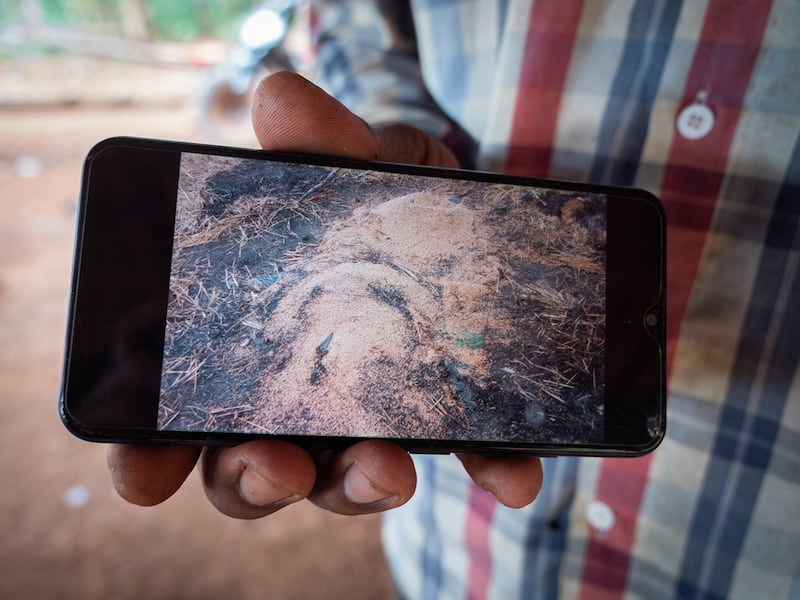
Lack of prior consent
Living amid the foothills of the Cardamom mountains, the Chong are one of an estimated 24 ethnic minority indigenous groups, many with their own languages, representing less than 3% of Cambodia’s population.
Like other Cambodian indigenous communities, Chong culture is intertwined with the surrounding natural environment. These communities rely on shifting cultivation by rotating their farmlands and letting some plots grow fallow for several years at a time, allowing the soil to recover but also leaving their traditional lands more vulnerable to land-grabbing, including from the Cambodian government.
The Southern Cardamom REDD+ Project launched in 2015, but it was not until August 2017 that consultations with the 11 Chong communities living inside or near the project began. Eight of the communities were folded into the Southern Cardamom National Park before their customary lands had even been officially mapped, though the project acknowledged in documents that the Chong “have lived in the area for centuries.” Farming is prohibited inside national parks without government approval.
The Human Rights Watch report alleges that the REDD+ project violated indigenous Chong peoples' rights, including Free, Prior and Informed Consent, under international standards and Cambodian laws as well as the policies set by Washington, D.C.-based nonprofit Verra, which is responsible for certifying more than three-quarters of all carbon credits.
When an auditor pointed out Chong communities had not provided prior consent as required for Verra certification, Wildlife Alliance and Ministry of Environment representatives responded that “we assume that as the communities [in the Project Zone] have no land rights to or within the Project Area, their participation in the REDD+ Project is entirely voluntary.”
Even though formal consultations with Chong communities began 31 months after the project’s start date on Jan. 1, 2015, Verra still found the project in compliance with its Voluntary Carbon and Climate, Community & Biodiversity standards, bolstering the value of the project’s carbon credits by certifying them as supporting indigenous peoples’ rights.
“This is a clear failure of oversight systems, because ultimately, it is Verra who makes the decision about whether to grant accreditation to the project and whether to maintain the project’s accreditation,” said Luciana Téllez Chávez, a senior environment researcher at HRW who spent two years investigating the Southern Cardamom REDD+ project.
After receiving HRW’s preliminary findings last year, Verra suspended the project in June from issuing further carbon credits and opened its own review. In a statement to RFA, a Verra spokesperson said their investigation was ongoing and its scope had been extended this month.
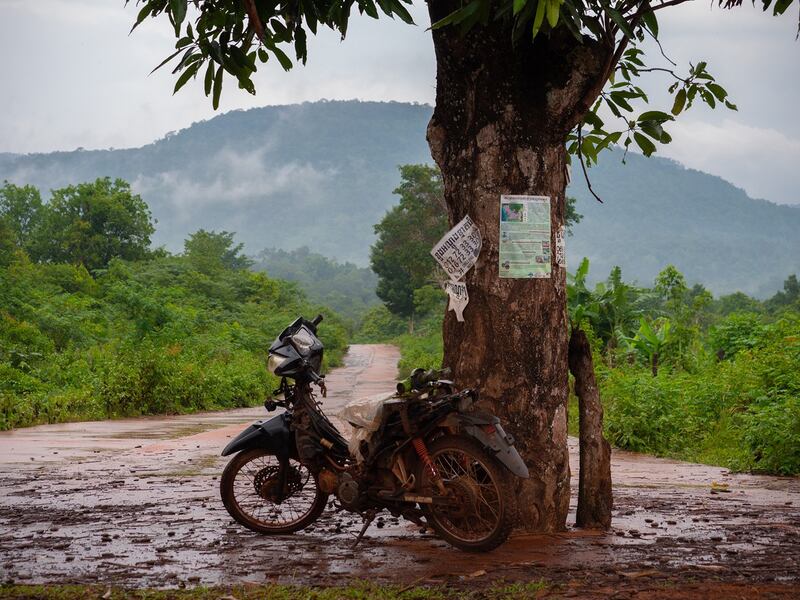
No contracts, few benefits
While the project has generated more than $18 million, residents in Chumnoab village say the most visible benefit is the drinking well along the red dirt road passing through the center of the community. (Wildlife Alliance said it installed a total of 22 wells and 74 toilets across 29 villages in the project, as well as roads and one school and health center.)
As of late 2021, $6 million had been spent on the project following earnings of more than $18 million from carbon credit sales, project documents reviewed by HRW show. There is no legal contract with Chong communities to determine how revenue will be shared and used, HRW reported.
Wildlife Alliance said in its January statement that its Southern Cardamom community development and livelihood programs received more than $2 million from carbon credit revenues last year, supporting 419 permanent jobs and 5,000 jobs indirectly.
This part of the Southern Cardamoms, which is also known as the Areng Valley, remains a popular eco-tourism spot, and some Chong community members have been able to develop homestays to host paying visitors. Buddhist monks and environmental activists wrap saffron cloth around trees on the dirt paths leading into the forest as a symbol of protection. In her email to RFA, Wildlife Alliance founder Gauntlett said indigenous residents of the area had earned more than $1 million from ecotourism.
But many Chong community members remained uncertain about what exactly the REDD+ project has done besides engage in strict patrols and were unclear how it benefited them, HRW reported.
In one commune in 2018, fewer than 10% of residents expressed approval for the project and auditors reported villagers “walked out to show disapproval for the project.”
Last year, Wildlife Alliance held a series of meetings with all eleven Chong communities and reported that 98% of participants wanted the project to continue. However, less than one-fifth of the villages’ population participated in these meetings, the HRW report found.
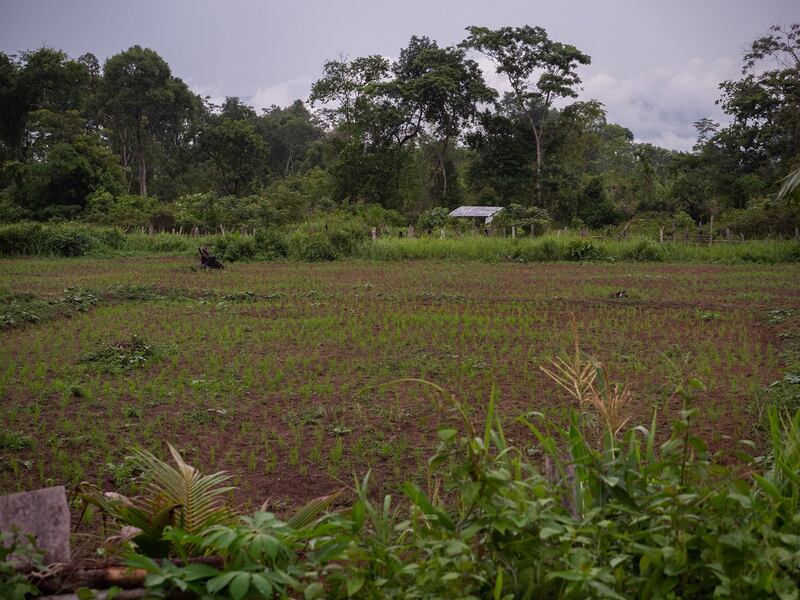
One Chong leader confirmed there is no legal benefit-sharing agreement with the communities and said the villages wanted greater input into how the REDD+ funds were used, including to support community-led patrolling efforts.
“We want a budget to support welfare, such as for protecting the forest and supporting pregnant women,” he said in late February. “We are not against REDD+, but they must agree with our conditions and include and inform us in the decision-making process.”
The project also may have vastly over-calculated its carbon emission reductions, selling more than twice as many carbon credits as it should have between 2015 and 2021, analysis from carbon credit research firm Renoster found.
Gauntlett, Wildlife Alliance’s founder, told RFA that Renoster’s findings are “flawed” because the firm’s analysis relied on what she described as a faulty data set from Global Forest Watch and narrow methodology. She said in an emailed statement that the REDD+ project is “at higher risk than it appears” given the government’s history of awarding economic land concessions for industrial agriculture inside protected forests – justifying the amount of carbon credits her project issued.
Cambodia has lost more than a quarter of its forest cover since 2000. Wildlife Alliance said that its patrolling has kept the Cardamom forests “effectively defended against constant threats,” noting ranger patrols had seized “over 9,000 illegal chainsaws and 864 guns.”
Wildlife Alliance advisers lead patrol teams that include Environment Ministry rangers and military police and are tasked with carrying out arrests or destroying crops and burning structures – including residential homes – when they are found in what the organization considers to be conservation zones.
But the HRW report and villager testimony reveal an organization making little effort to distinguish between communities’ livelihoods and genuine threats to the forest.
One Chong commune counselor in the Areng Valley said they supported the aims of the REDD+ project to protect the forest and provide benefits but believed ranger patrols had treated the communities harshly.
“Sometimes, what they do is beyond the law,” the official said. “When they enter people’s homes or destroy the charcoal kiln or take away the equipment or property of the owner, that is a problem. I know they intend to protect [the forest], but they need to know the limits of protection.”
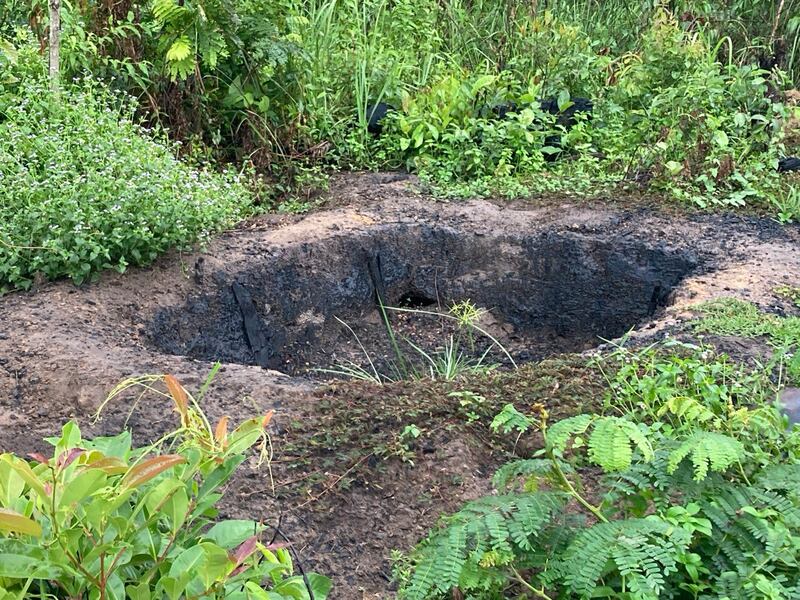
Cambodian authorities have pledged to crack down on charcoal burning in recent years and in 2021 Wildlife Alliance posted a video on Facebook of its rangers smashing charcoal kilns in the Cardamom mountains.
“Charcoal production drives deforestation: kilns are fed with wood to make charcoal,” Wildlife Alliance wrote in an accompanying post.
A Chong villager in Areng Valley told RFA that in 2022 rangers demolished a small charcoal kiln that sat next to her family’s house. The kiln was no offshoot of an industrial-scale logging operation, but a small business that allowed the village to prepare firewood for the long rainy months. After seeing smoke, Wildlife Alliance rangers arrived without warning to destroy the kiln, the villager said.
“Now when it rains, it is wet and the wood is wet, it is difficult for us to get firewood for cooking food,” she said.
Wildlife Alliance carried out its own surveys of Chong villages in Chumnoab and Pralay communes, classifying more than 1,000 hectares as “abandoned” fields and excluding them from being considered as community land. Chong leaders told HRW they had never been consulted on decisions to classify swaths of farmland as “abandoned.”
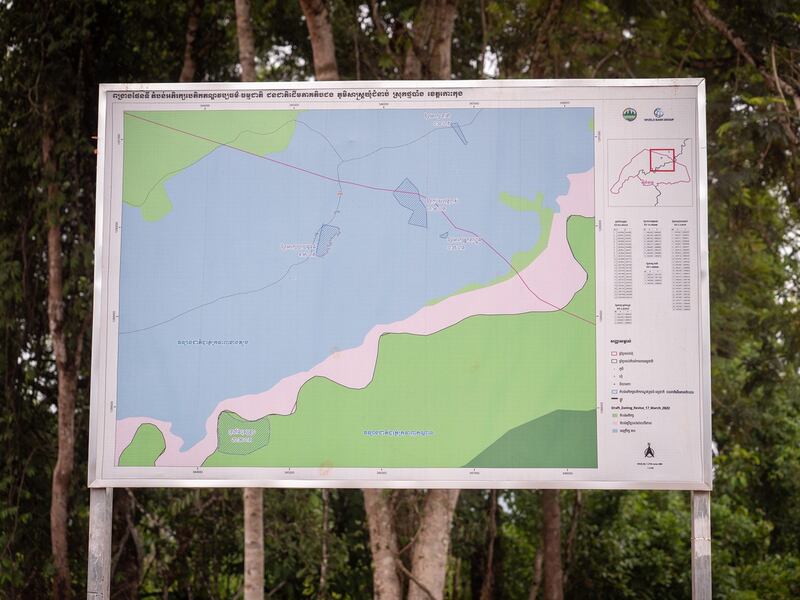
“When making the map, they did not think about the people’s farmland… [as a result] when the map was made it overlaps our farmland, so we keep raising this issue,” said Sok, the Chumnoab villager whose rice harvest was destroyed by rangers.
Once the land was classified as abandoned, Wildlife Alliance could legally justify going after Chong practicing traditionalshifting cultivation, as they did with Sok.
Wildlife Alliance says it installed around 1,200 demarcation posts between 2015 and 2021 to distinguish boundaries. A map is posted at Chumnoab village but community members maintain it offers little clarity.
Chumnoab villagers say they go to farm in groups now, because they never know when ranger patrols will try to arrest them, claiming that they are trespassing on protected areas.
“People still do rotational farming but there are still problems, so sometimes they have to do it secretly,” the commune counselor told RFA. “If Wildlife Alliance catches them they will get removed and threatened by them. Sometimes we hear the sound of gunfire, but they do not shoot people, just shoot [in the air]. And there are confrontations, people are arrested.”
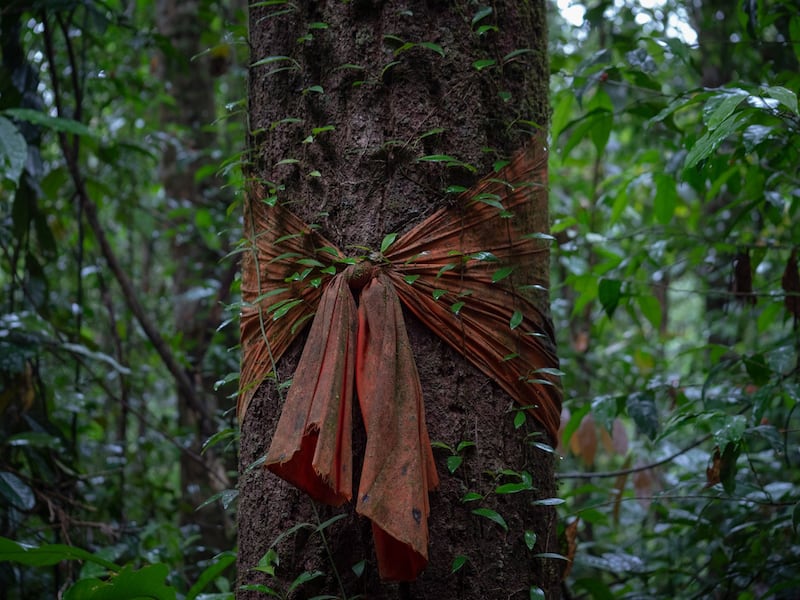
Fears over unclear zoning
Almost a decade after launch, the project still has not completed mapping of community lands or issued land titles granting ownership to communities’ farmlands and sacred sites, while the government has yet to even recognize some of the Chong communities as legally indigenous, HRW found.
When Chong communities pushed for land ownership, Wildlife Alliance undermined these efforts or else failed to acknowledge long standing customary land tenure claims, HRW’s report found.
In Thmor Donpove commune, comprising two Chong villages, Wildlife Alliance tried to block 1,851 hectares from being titled for villagers, claiming the land was forest land. A government investigation into the NGO’s complaint found more than one-third of this land was farmland – yet most of these plots ultimately remained classified as protected area, according to HRW’s report.
In March 2021, Cambodian authorities engaged in another land titling effort around Koh Kong province known as Sub-decree 30, which removed much of Areng Valley from protected area status and granted legal recognition of Chong communities’ land use.
While this should have meant Wildlife Alliance and the Environment Ministry ranger teams no longer had jurisdiction, HRW found rangers still operated as if they were patrolling a protected area. Chong villagers were forced off their farmland, which the government had legally recognized as community land. Wildlife Alliance told HRW that it had reached an agreement with provincial authorities to continue patrolling these areas.
In June 2023, Wildlife Alliance shared a map with HRW for Chumnoab and two other communes in the Areng Valley that criminalized farming on more than 4,300 hectares previously designated as community land by Sub-decree 30, according to another contradictory map for the same area Wildlife Alliance had recently provided HRW.
Chong community members had repeatedly raised to auditors working on behalf of Verra the problems caused by these unclear boundaries, but HRW noted that Wildlife Alliance and the Environment Ministry responded by claiming these complaints came from people engaging in illegal activities, leading the auditors to resolve the concern.
HRW’s Téllez Chávez said the auditors’ willingness to accept the project implementers’ claims appeared to not take into consideration the Chong communities’ lack of land rights.
“If you [the auditor] just take this answer for granted, then you failed at your duty to actually try to establish the facts of the situation,” she said.
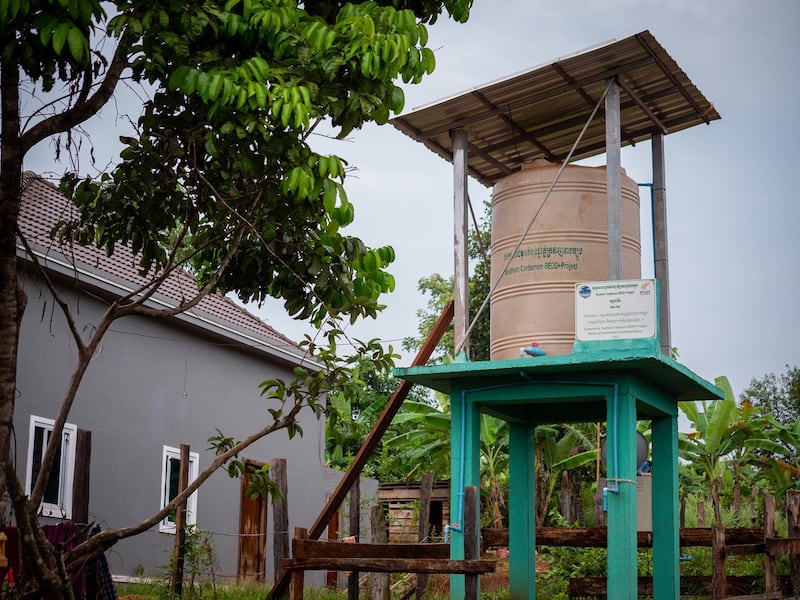
Calls for remediation
Chong community representatives said that since the HRW investigation became public last year things have been less tense but communities are “still afraid.”
As of January, authorities are now measuring the land for individual land titling but this is still not including all the community land, the Chong community leader said.
Authorities have continued suppressing Chong communities’ efforts to secure communal land titles, which would better protect shifting cultivation rights and sacred cultural sites, said one Chong leader. Top level national government officials told Chong community leaders last year to resolve the issues with local authorities, who have since refused to meet with them.
Wildlife Alliance recently agreed to provide technical and financial support for indigenous communal land titling, and to support an indigenous community patrol team. The NGO has also committed to developing a human rights policy and providing human rights training to its staff and government rangers, in response to HRW’s recommendations.
“While the commitments that Wildlife Alliance made are positive, they fall short of recognizing that any human rights violations took place and that people who were harmed are entitled to comprehensive remediation,” Téllez Chávez said. “And that’s very important to ensure that these things don’t happen again.”
Edited by Abby Seiff and Jim Snyder.
